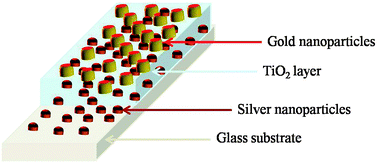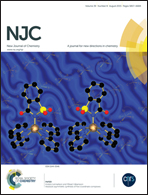Facile deposition and plasmonic resonance of Ag–Au nanoparticles in titania thin film†
Abstract
Plasmon resonance in noble metals at the nanoscale is technologically important for various applications as it is an important fundamental building block of plasmonic devices. Silver embedded in a glass matrix followed by the deposition of gold embedded in a titania matrix were synthesized in three to four steps by a simple and inexpensive thermal spray pyrolysis technique. The effects of annealing temperature on the plasmonic response and optical activity of silver and gold nanoclusters in soda-lime glass and titanium dioxide matrices have been investigated using UV-visible absorption spectroscopy and photoluminescence spectroscopy. The surface plasmon resonance (SPR) at a hybrid metal–dielectric interface for silver and gold was shown to be influenced by the presence of Ag+ ions and the increased particle size of gold nanoparticles as a function of post annealing temperature. This study reveals that the SPR and the luminescence properties are strongly dependent on the glass matrix, which cannot be achieved in all types of glass slides. Field emission scanning electron micrographs confirming the presence of randomly shaped nanoparticles whose size increases with annealing temperature were inconsistent with the particle size calculated from Mie theory.



 Please wait while we load your content...
Please wait while we load your content...